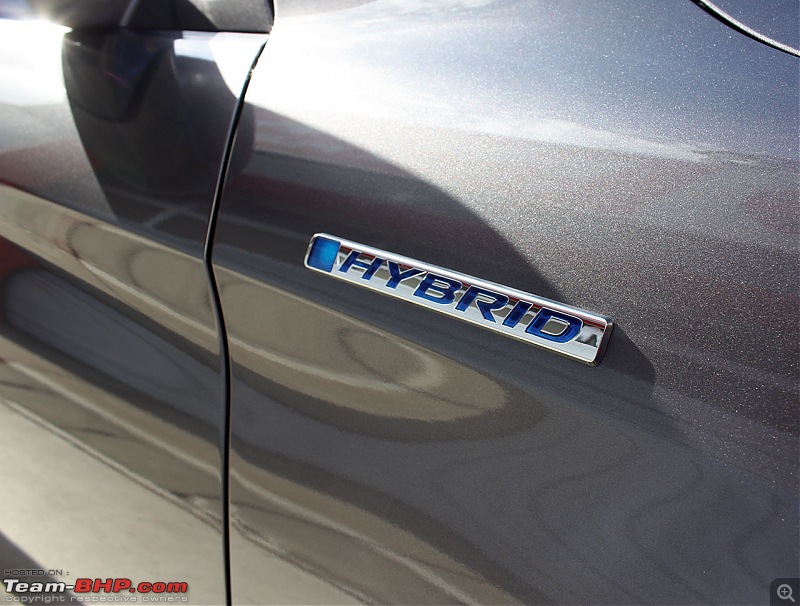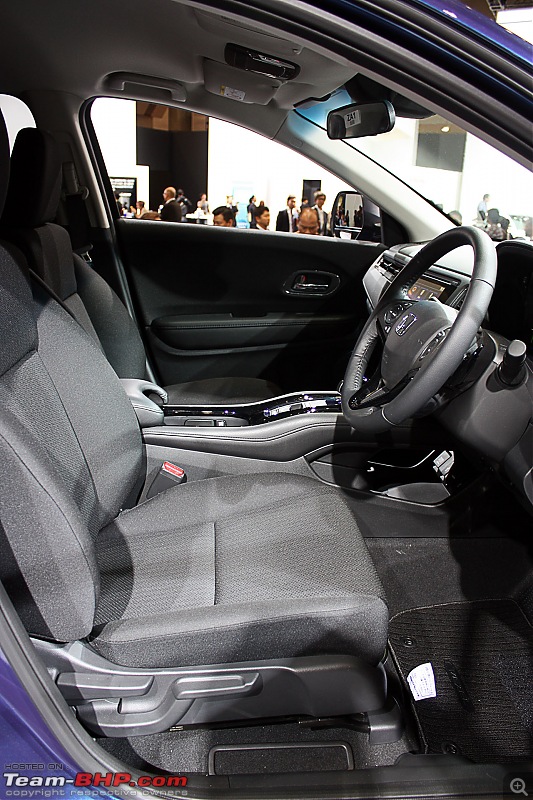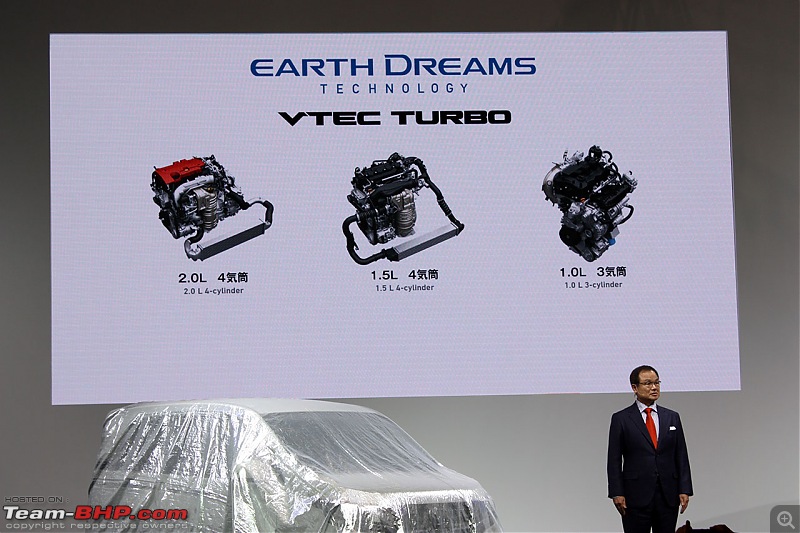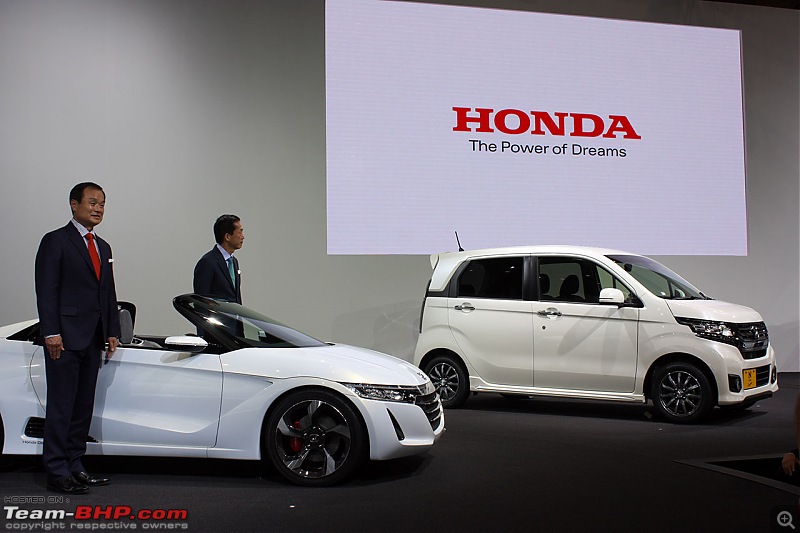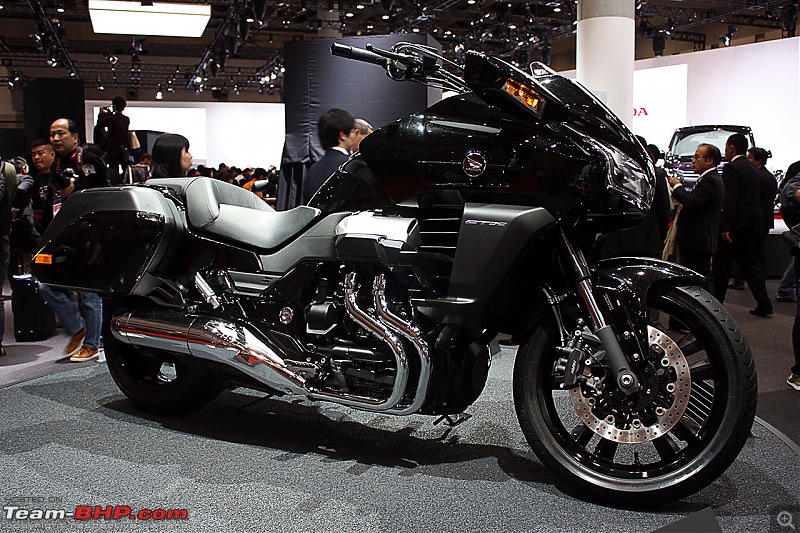Mod Note: The Official Honda Mobilio Review has been taken live at this link. Please continue the Mobilio discussion over on the review thread.
Team-BHP was invited to a 2-day event in Japan by Honda. Day 1 would involve driving some of Honda's upcoming models & technologies at the Twin Ring Motegi race track, while Day 2 would be at the Tokyo Motor Show. Some of the cars shown have direct relevance to India, while the others were meant for Japanese / Western markets. We explore in more detail below.
There was an introductory briefing from Mr.
Yoshiyuki Matsumoto - Managing Officer, Honda - before the drive began:

The various drives of the day:

India was in its own group:

The Twin Motegi racetrack - 2 hours outside of Tokyo - is constructed and owned by Honda, and features a leg of the MotoGP championship (among others) in the annual racing calendar. The cars (all automatic) available to us were:
1. Mobilio
2. Jazz (Petrol/HEV)
3. Honda Accord Plug-in HEV
4. CRZ (Mugen)
5. Odyssey
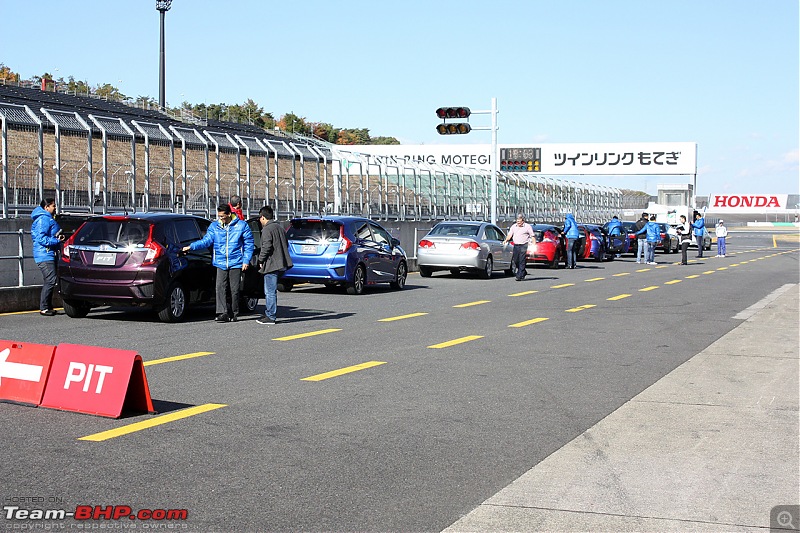 HEV Technology:
HEV Technology:
Before I delve into the actual cars, a little more about the HEV technology on tap. HEV - or Hybrid Electic Vehicle - isn't something entirely new. It features an electric motor & a petrol motor, and is defined by 3 automated modes of operation between the 2:
EV Drive: Start off / low speeds: Solely powered by the electric motor (Li-Ion battery). There is therefore, no conventional ignition key. Just a start button for the electric motor alone.
Hybrid Drive: Hybrid mode. For mid-range / cruising speeds. Both motors work in tandem. The petrol motor charges the electric motor, which continues to drive the wheels.
Engine Drive: High RPM / Spirited driving. The petrol motor takes over completely.
Honda's value-add in offering HEV is two-fold:
1. Honda claim that their HEV system is among the most fuel-efficient in the world. Spoken figures were around the 36 kpl mark for the Jazz HEV, and 70 kpl for the Accord Plug-in HEV.
2. All their future sedans sold in Japan will be HEV by default. This to me, was a significant paradigm shift for a company to take.
The Mobilio:
Enter the Utility Vehicles. UVs (MUV / SUV) seem to be the hottest segment in India today, and any manufacturer's commitment to the Indian market can be evaluated based on their UV offerings. Honda has decided to make its presence felt in this segment with the Mobilio - a 3-row MPV, built on the Brio platform. The Brio's platform is to Honda what the Swift's is to Maruti. Both manufacturers have built a hatchback, sub-4 meter sedan and MPV on the same platform.
The Mobilio is an important launch for Honda India, and the 3rd vehicle in their launch blitz. This 7-seater will be launched in 2014. It is also the last of the models to use the original Brio platform.

Apart from India, the Mobilio is designed for the Indonesian market, where MUVs rule the roost. MUVs in Indonesia form the largest automotive category, and being a similarly price-sensitive market as India, the mantra for this category of vehicles across the two countries remains the same: get in a proper 3-row vehicle that is built to a cost.
Secondly, the Mobilio that was made available by Honda was the Indonesia-spec model, with a 1.5L 100 BHP VTEC petrol. Driving this vehicle wasn't possible due to extraneous circumstances, and therefore the actual driving impressions will have to be reserved for a later date. In India though, this MPV will be offered with the 1.5L i-DTEC engine from the Amaze.

The Brio-DNA:

A 2,650 mm wheelbase and a 4,390 mm length give the Honda Mobilio proportions that are larger than that of the Maruti Ertiga, its chief rival in the Indian car market. Based as it is on the Brio platform, the Mobilio shares many parts including its interiors with the Brio range. At first impression, I liked the Mobilio. Its design is neutral, and certainly pleasing to all.



The ground clearance is rated @ 185 mm. This prototype had Honda's next-gen CVT transmission which has been developed specifically for Honda's smaller vehicles.
The Mobilio on display had prototype interiors - interior photography was therefore not allowed. However, from what I saw, the dash is a straight lift from the Brio, and felt rather small in proportion to the size of the vehicle. The dashboard was all-black and the seats all-beige. Seems to be a standard recipe for our market. The headrests are integrated, in the interest of cost-cutting. While the purpose of such cost-cutting is understood, care has to be taken by manufacturers not to overdo it. The seating in the 2nd row was usable. However for large passengers, legroom will be somewhat constrained. The 3rd row seating is definitely usable for medium-sized folk.
This parts sharing with the Brio / Amaze coupled to local sourcing could make for a competitive price tag. Pricing of the Mobilio, which is pegged between 150,000 and 180,000 Indonesian rupiah corresponds to 8.41-10.10 lakh rupees in Indian currency.
Brionic headlights!

Wraparound tail-lights:

Notably, the Mobilio badge has been resurrected by Honda for use in this MPV. The Japanese automaker withdrew the badge in 2008 to make way for the Freed MPV.
Twin airbags and ABS+EBD make for the standard safety features on the top-spec Mobilio MPV. Notable features include automatic climate control with twin blowers for the rear seats, keyless entry and a 2-DIN audio system with USB and AUX-In support.
A final look at the Brio DNA:
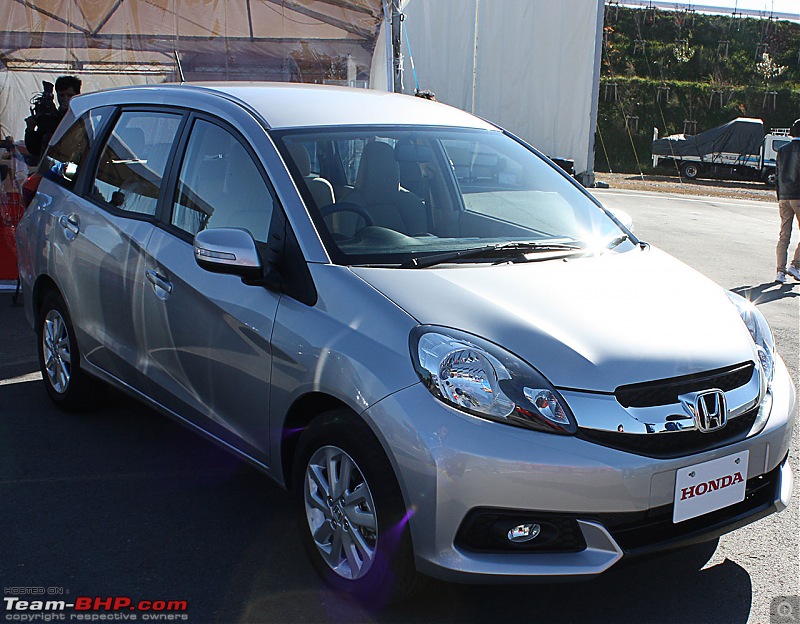



 (19)
Thanks
(19)
Thanks

 (23)
Thanks
(23)
Thanks

 (16)
Thanks
(16)
Thanks

 (16)
Thanks
(16)
Thanks

 (13)
Thanks
(13)
Thanks

 (20)
Thanks
(20)
Thanks

 (43)
Thanks
(43)
Thanks


 (3)
Thanks
(3)
Thanks





























 . Honda also displayed a CR-Z Hybrid at the track.
. Honda also displayed a CR-Z Hybrid at the track. 




